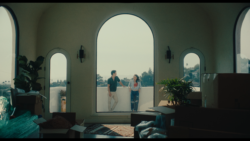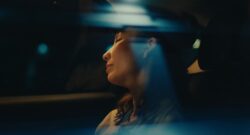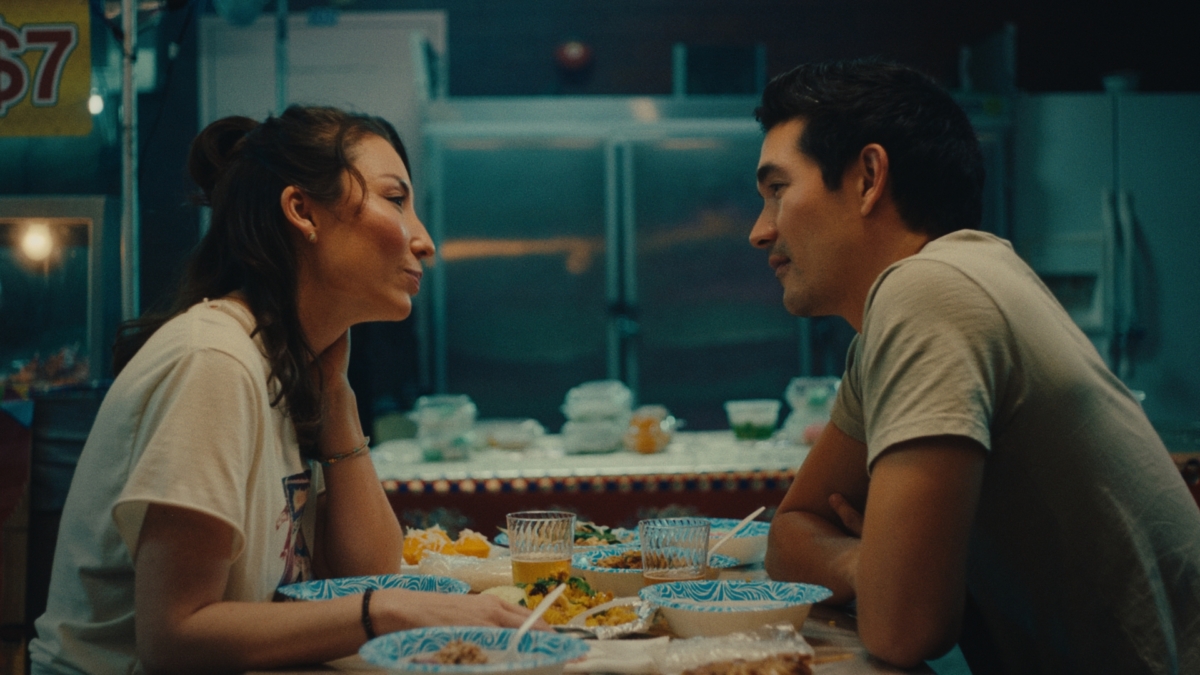“If you had a time portal that could take you to your favorite memory … would you do it?”
Would you jump right through without hesitation – or are some things best left untouched and reminisced? The film “This Time” opens on this question. It explores the opportunity of nostalgia and closure through two protagonists: Colin Lang (Ken Kirby) and Laela Sagan (Leila Perry), two high school sweethearts who unexpectedly reconnect 23 years after being separated in the May 1998 riots of Indonesia.
When faced with this question, Colin responds, “I know there isn’t one, so I’m not going to entertain the thought, because it would just frustrate me.” As Colin and Laela revisit the time together that they lost, his response illuminates the difference in their outlook on life – as well as the different routes they took since being torn apart. Colin prefers to keep moving on in life, focusing more on the practicality and logic of the cards he was dealt, leaving little room for reminiscing – while Laela still uses Colin as inspiration for her sculptures. But regardless of the mechanisms they choose to deal with the past, their unexpected encounter throws them into a vacuum of emotion, and forces them to grapple with the remnants of their “love.”

As mixed-race kids raised by expat parents living in Indonesia, finding a sense of belonging has constantly loomed over their lives – even more so after being ripped away from their homes and the one love they shared their adolescence with. Colin and Laela’s sudden reconciliation after two decades brings a rush of buried emotions: “You remember all the love … how much it meant to you, who you were at the time,” Laela says. In both its familiarity and complexity, their relationship is confronted with the closure they never received. The film visually portrays this in a scene where Colin and Laela revisit their old tape recordings with a projector. Director Sebastien Tobler sets the camera between them and the projector, with the focus on them. The hues of the projector reflect onto their faces, creating a beautiful shot of their younger selves illuminating their present-day selves. As they relive their past, the audience can see the nostalgic longing they buried away emerge from their eyes, and get a glimpse of their spark. Tobler continues to build on this when they get dinner at Colin’s favorite place – a restaurant that’s closest in resemblance to life back in Jakarta. Here, Tobler uses the Step-Printing effect, popularized by Wong Kar Wai, to blur out the background, while the objects are still in focus. This effect keeps Colin and Laela in view, while the restaurant and patrons around them smear out of focus, giving a feeling of isolation in both space and time. And as their eyes lock, while the world behind them spins, you begin to see the “home” they’ve been searching for since Jakarta in each other.
Tobler and Producer Theresa Chin wanted to explore the question of what nostalgia and belonging are. Growing up as an expat himself, Tobler uses “This Time” to express his own omnipresent sense of yearning. It is, as he mentions in his IMDb, “filled with the sadness of departures and instability of impermanence.” Through Colin and Laela’s rekindling relationship, we delve into the idea of finding home again, and get a glimpse of life on the other side of the portal. While it may be hopelessly romantic to conclude that the last two decades were just a blip in their destined love, it may also just be nostalgia for the past, as “sometimes fantasy is better than reality.” When it comes to Colin and Laela, only time will tell if this is the first step to recapturing the bits of themselves they’ve lost along the way – or if some memories are best left alone.

“This Time” screened at the 46th Asian American International Film Festival.

